Busiest year so far in my forests. I am getting to do lots more of the things I want to do and the work is starting to be the way I hoped it would be. I spend a lot of time out standing in my fields and I keep on thinking of the Aldo Leopold essay “Axe in Hand,” about how we affect the landscape and thereby change the future – do, reflect on what you have done & change what you do based on what you learn. Good advice on the land and for life. I read that essay decades ago, but really took it to heart a couple years ago when I got to lead a discussion group at Aldo Leopold Center. Leopold said that it was not enough to read about land ethics, but rather to live it and to learn from interactions with the land. You and your land metaphorically cooperate in writing a land ethic. My land has been teaching me a lot. I only wish I could express it more directly. I don’t have the words. I wish I could phrase it for even myself. The best I can do is tell about the year in the forest. Maybe in the telling, it will better be understood.
A big difference about acting in nature versus acting in among our fellow humans is that nature does not accept excuses. You cannot complain or demand special treatment. Nature cuts you no slack. I identify as a robust young man. Nature constantly reminds me that it does not care what I think. When I go out to plant trees or cut vines, I cannot say I should be able to do more than I can do.
Ecology is all about – only about – relationships

Since I am talking here about my interaction with my forests, I include thinking that I might do far away from my land. You can reflect about the land without having your boots on it. My year in the forest started far away from Virginia. Chrissy & I visited ancient settlements in New Mexico where we learned more about how the ancestral Pueblo had managed fire in the ponderosa pine and juniper forests in those montane forests. I have been studying the Ancestral Pueblo for a while. I want to know more about them because they are intrinsically interesting, but I also want to know more about how they lived sustainably on fire-prone landscapes for more than 500 years. I thought about what we could learn from their experience in general and how I could specifically apply some of their insights to my land in Virginia. The environments are different but some of the principles are the same. Ponderosa pine ecosystem have a fire regime analogous to longleaf pine.
Using tree rings, scientists have mapped the changing climate and conditions in the Southwest with precision going back more than 400 years and make decent estimates farther back.
The tree rings tell a story of wet and dry years and fires that go with them. Not surprisingly, fires are more common in dry years, but fire scars indicate that centuries ago fires were frequent but not very hot. The record of the area around the Jemez Mountains in northern New Mexico experienced frequent low-intensity burns until around 1680. After that, fires become less frequent but hotter. This fire regime persists until just before 1900, when fires are almost gone, until the serious upsurge a few decades ago. What happened? Spanish and then American settlers moved in and changed the fire regimes.
References – Fires Bigger Than Ever
Learning from Native American fire practices

The Pueblo had a yearly routine that served to periodically burn the landscape in patches and to remove much of the denser flammable material. In the summer, they spread out over the landscape to hunt and cultivate small food patches. Fires escaped from campfires and sometimes they set fires to improve hunting.
I could not learn if they specifically did this, but I learned that other native groups set fires in the fall when they left the forest. These fires burned along the ground until extinguished by the snows of winter. In the winter, the Pueblo retired to their centralized settlements. A big part of what we would today call “fuel reduction” in the forest came from the use of firewood for cooking and heating. It takes a lot of wood to keep warm in the winter. None of that wood consumed in that way remained in the forest to stoke hot and destructive forest fires. I think this wood consumption may be one of the missing links in how we manage for fire today. Even if we do periodic burning, if we do so w/o removing some of the dense fuel, the fire will persist too long and kill the trees. We can use this principle by removing some timber from the lands – another ecological argument for sustainable harvests.
References – A study of history at Bandelier National Monument
Exchanging lessons from ponderosa to longleaf and back again
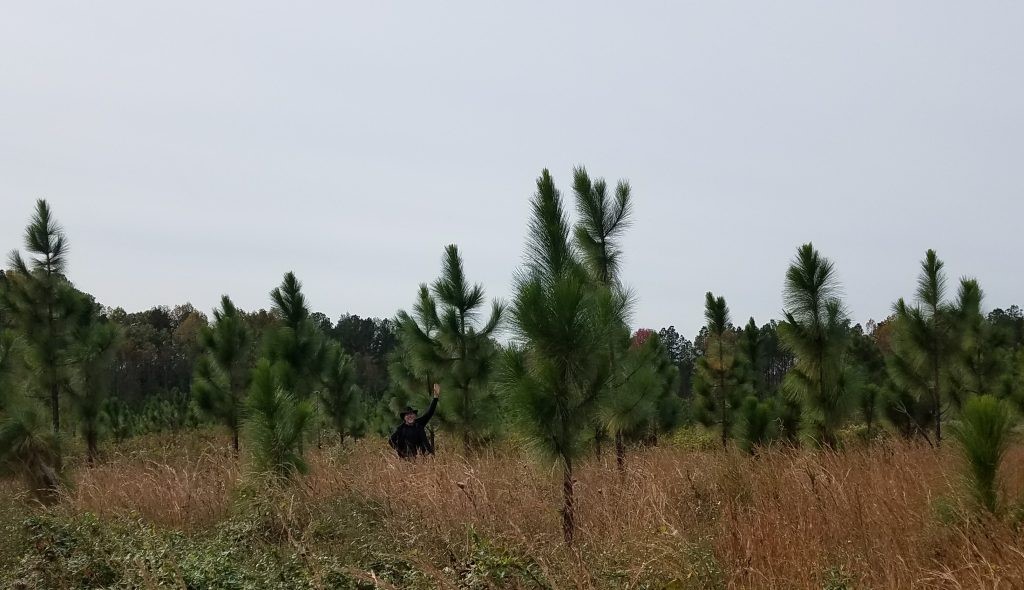
I loved the ponderosa pine ecology even before I encountered it physically. I knew it from my studies. It is similar in its fire regime to southern pine and longleaf and the ponderosa pine ecology was a kind of inspiration for my land management this year. I know that we cannot and should not try to reproduce one ecology on a different one, but the general lessons were the same for both. Pine trees should be widely spaced. The forest is more than the trees and so we should look to the total ecology, and fire was the arbiter, even if in thinning I was doing my part to set up the future diversity. Unlike Aldo Leopold, I did not actually have an axe in my own hand, but I was going to make the management work.
A side note on ponderosa pine – it is a simply wonderful ecology, beautiful to look at, productive for wildlife and it even smells good. Ponderosa pine have a kind of vanilla-pine smell. If you were blindfolded and dropping in a ponderosa pine forest, you might be able to tell where you were standing just by the smell. Ponderosa are a common montane species on Sky Islands.
Don’t mimic nature; find & use nature’s principles
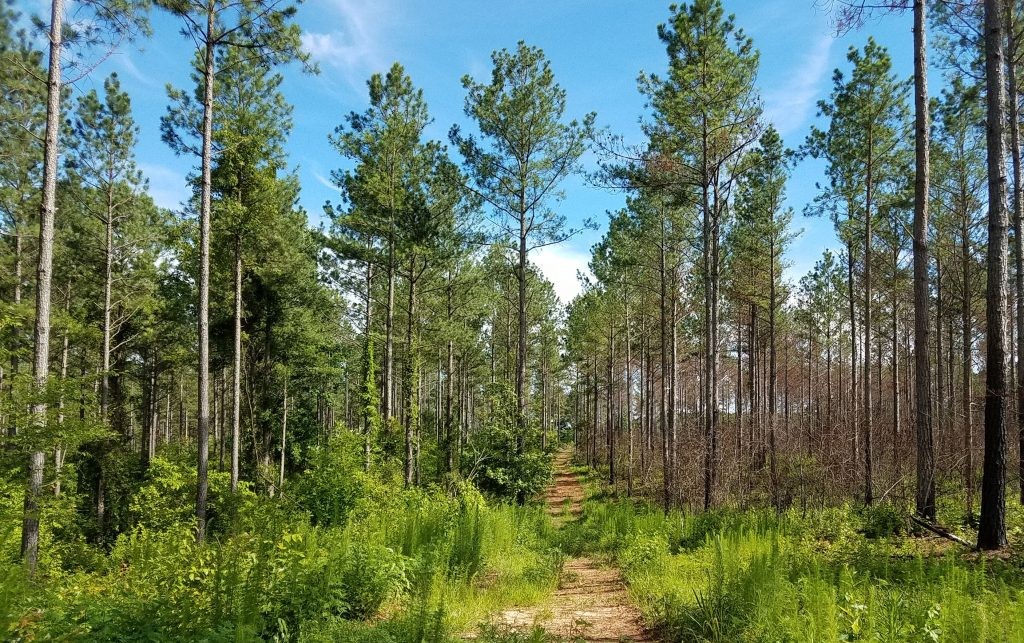
My goal is not to restore pre-settlement ecology. Restoration is not possible and probably not desirable. So much has changed and nature is never settled. Embrace the impermanence. A diverse ecosystem that respects and uses natural principles but does not merely mimic nature, that is what I want on my land and what I hope to learn from my land. When talking to people generally, I often use words like “restore.” People like the idea of restoration. I do too, but I know restoration is not an option. We have too many changes in Virginia, too many invasive plants and too much human interaction ever to restore what was once here. Beyond that, there would be no way to know what you should restore. Even with precise (and impossible to obtain) information about what was here and how everything was connected, in what year was everything exactly the way it should be?
The answer is never. Nature is never finished. Virginia of 1608 is different from but not better than the Virginia of 2018 or how it was during the last ice age or when dinosaurs roamed Our beloved longleaf pine ecosystem began its development on coastal plain exposed by much lower sea levels during the last ice age and “invaded” this land as its home range disappeared under the rising seas.
All we can do is move forward using the principles in an iterative way, trying something, learning something and then trying again with the profound understanding that this too is passing, and knowing that much you get from being in nature is being in nature. It is the action and the reward.
As in Leopold’s formulation – do, reflect and then do again at a better level of understanding. The landscape that greeted English settlers at Jamestown in 1607 was appropriate to the time. What I want to restore is not that, but rather my task is to try to determine what is appropriate today and for the next generation, since the trees will live in a changed future landscape. We give the native plants and relationships the benefit of the doubt. They are presumed most appropriate until more information is available. Some relationships have changed, however, well beyond out capacity to restore, so we try what will work today. Native is not always better. Who can say what it even means to be native these days. If the environment is profoundly changed, what was native to that longitude and latitude may no longer have native virtue.
News from the various units
Brodnax
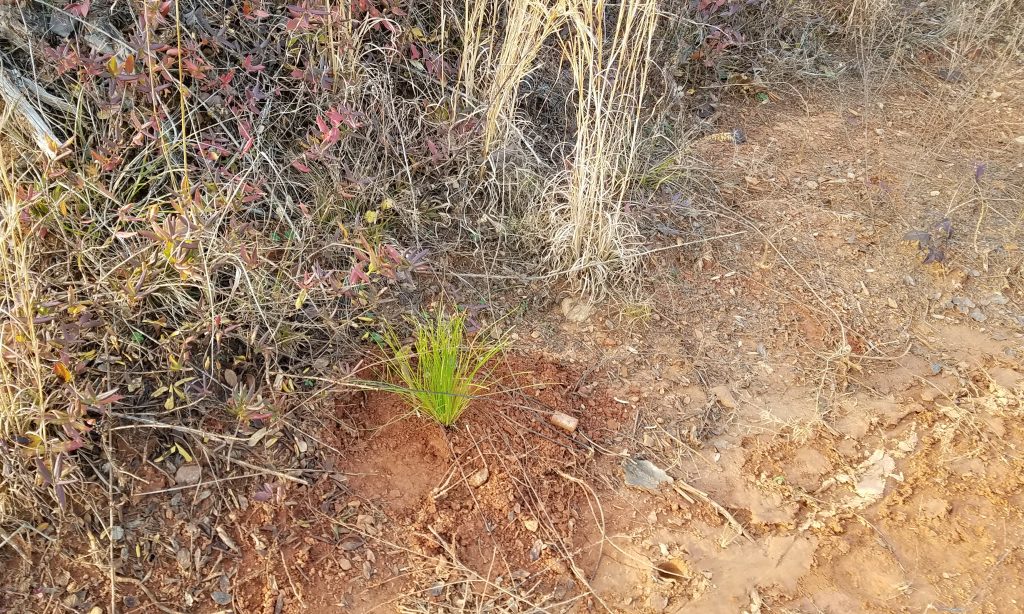
We thinned 45 acres on the Brodnax place in 2017. The trees are widely space, about 50 basal area, as opposed to the 80-100 BA normal for commercial pine forests in the Southeast. The plan, in cooperation to NRCS, is to burn around 15 acres every year – a patch burn strategy to create a mosaic habitat that scientists tell us was common in pre-settlement Virginia. This allows wildlife to move out of the way of the fire while it is burning and then take advantage of the difference between the burned and unburned forest when the fire is gone.
We burned in May – a patch burn of around fifteen acres. The fire got a little hot in a few places and killed about two dozen trees. I mourned their loss, but we can move on. I decided to leave the dead trees standing to provide snags for wildlife.
Planting the longleaf plugs
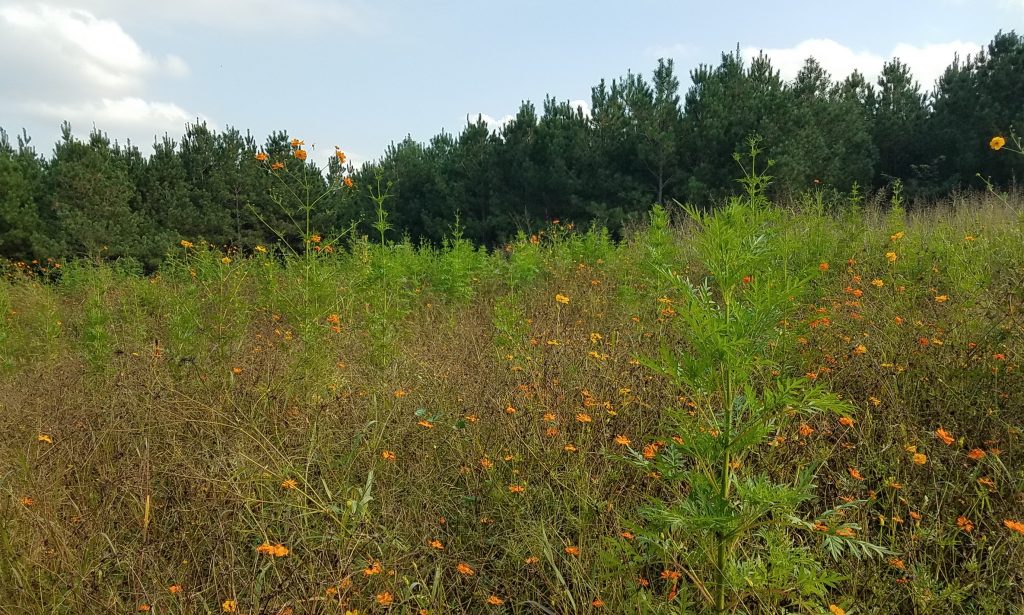
I planted longleaf pine under those dead trees. It should be sunny enough for the longleaf to thrive and I hope that the longleaf roots will have an easier time if they can follow the softer underground paths as the dead loblolly roots decay. This method it follows the natural principle under which longleaf would seed in after a fire. We planted in December. Longleaf should be planted in winter. Longleaf in a natural system start to grow in winter. Taking advantage of winter rains and generally wetter soil, they get a little head start over other vegetation after a fire, and they need it. Loblolly immediately start growing up, growing above the competition. Longleaf spend their first couple years sending down deep roots, growing down first. This gives them an advantage later in adapting to drought or fire, but they can lose the race toward the sun before they get a chance to grow up. One of my tasks over the next years will be to “cheat” to help the longleaf.
Larry Walker and the McAden Hunt Club planted pollinator habitat along the roads. These should reseed themselves next season and some of the seeds will spread into the open forest, including into the areas with the killed pines. Nature is resilient, and we can help it being even more so.
Low survival rates from the 2016 planting
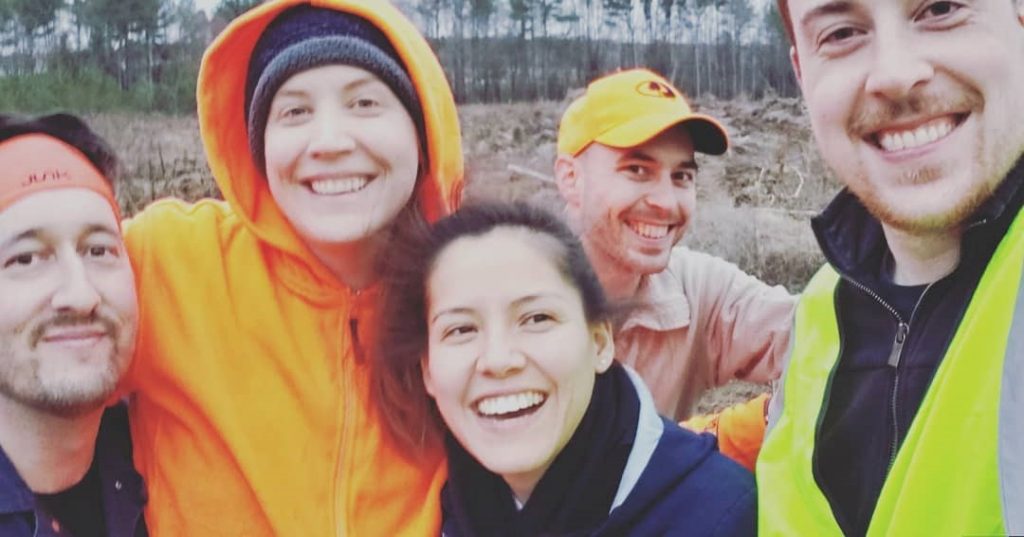
Survival rates for the 2016 longleaf on Brodnax were disappointing. I checked them out in December and found them very thin on the ground. I speculate that they were planted too late in season. They were not in the ground until late March and it didn’t rain much in the weeks after. Since I did not have the time or muscle to plant several thousand trees, I decided to do the easy thing. I planted around 500 longleaf near the roads and paths. Natural loblolly and some shortleaf will fill in the blank areas. Loblolly pines are prolific seed producers. In a natural system, they seed into disturbed areas and quickly establish a pine forests as an early step in natural succession. This is what I have and I will end up with a mixed pine forests, but with rather more longleaf (I hope) than anything else. I got the new longleaf from Bodenhamer in North Carolina and started planting some that same day. So, they were fresh. It was the right season and a rainy day, so they should survive well. I figure that if I am going to plant a limited number of trees, I may as well plant where it is easiest to do and easiest to tend later. I will be able to walk on the paths to spray or just look in on them. Beyond that, the paths will be sunnier.
There is an implied criticism when people say, “you are always looking for the easy way to do things.” Who the heck looks for the hard way. Reminds me of the odd saying that “you always find your keys in the last place you look.” Well … who keeps on looking after they have found them? I took the easy way with my pines and the success will be better for it. At least I think so.
Planting was both hard and rewarding. I have enjoyed being out in the fields, but my progress is slow. I am planting one every five steps. I am planting plugs and I have a plug planter. It is like one of those bulb planters on a stick. It pulls out a plug just a little bigger than the plug we plant. The plugs remind me of carrots. I have been punching the hole and them rotating the planter so that it creates a circle of bare ground. I hope the works. Will see next year.
Contemporary accounts of the burning are included here & here.
Diamond Grove/Chrissy’s Pond
I had planned to thin this unit in 2019, but I think now I will delay until 2020. The trees at that time will be 17-years-old. My current plan is to thin to 50 basal area. I think that I am going to make that my signature on my land. I will clear cut an area of about five acres near Genito Creek. It is very we there. The pine trees are not growing as well as elsewhere on the land. I think I will replant with bald cypress, better adapted to that micro-environment. If we do experience global warming, these trees will be well-adapted. Bald cypress occurs naturally in Virginia. There are lots of them in the southeast part of the state and nearer to my land along the Nottoway River, maybe 50 miles away, so I think I will call them native.
The McAden Dairy Hunt Club planted pollinator habitat & warm season grasses on the food plots this year. Seeds were expensive, but we got an NRCS grant to help defray the cost. I believe these will become self-sustaining. They will be well-established by 2020 and can spread into the sunny woods when we do the thinning.
There has not been much work to do on this unit, although I have found work to do. I mostly pull vines and try to thin out the invading hardwoods. I am not sure how much good this does, but it gives me a chance to get into the woods with something to do.
The Diamond Grove place is still my favorite. It is a little more diverse than the others in terms of topography, streams and steam management zones, but I think I like it best because it was my first piece of land and I have watched the trees grow for going on thirteen years now.
BTW – there is no pond on the Chrissy’s Pond place. I had considered making one, so the name is aspirational. I call it Diamond Grove when describing it to others, since nobody would know what I was talking about if I called it Chrissy’s Pond.
Freeman
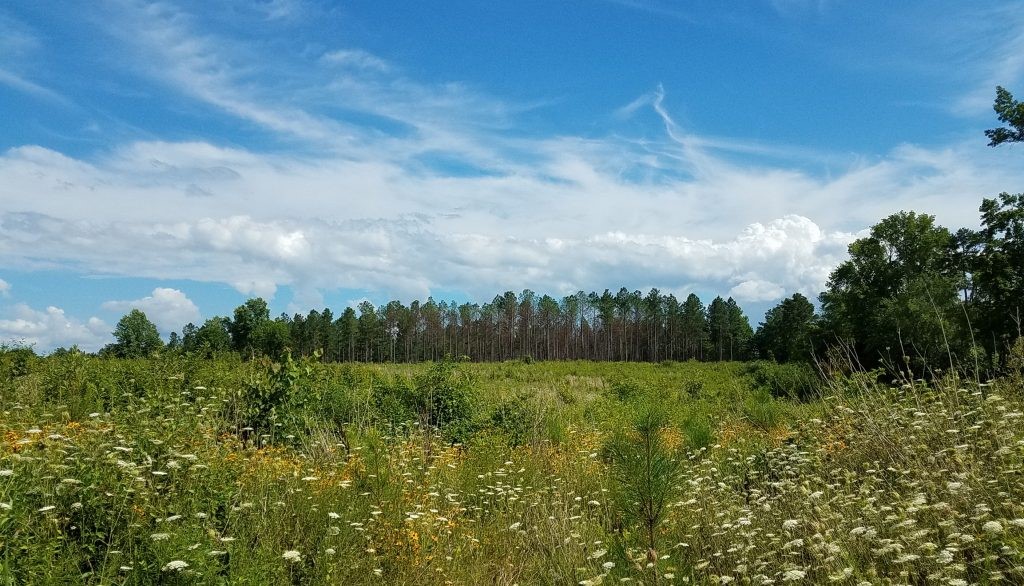
This was the unit with the most activity in 2018. We thinned to 50 basal area and made clearings of ¼ acre in every acre. The plan is to plant longleaf in the clearings and under some of the thin loblolly. This year I got around 2800 longleaf from Bodenhamer and we did a planting day. The kids did the planting and managed to get around 1700 in the ground. I plan to go down in the next few weeks and get the rest in the ground. I am glad that the kids are involved. I hope this will strengthen their ties and love of the land. Mariza wrote a nice blog post about her experience. I think they had a good time and bonded a little more with the land. I want them to experience some of the joy I feel in the forests. In some ways, their experience will be even richer, since they will have more time to see the changes and developments.
It is a little selfish, but I hope that when they are walking on the land decades hence that they will sometimes remember me, “and all my grave will warmer, sweeter be.”
Department of Forestry was going to burn the cutovers, making it easier to plant and manage, but it has been way too wet this year. They did make some planting grooves that knocked down the brush and made it easier for the kids. We will need to burn every 2-4 years going forward. I think we will do it closer to the 4 years interval. That seems sufficient to keep the hardwoods and loblolly out of the longleaf and it burns out the litter enough. Longleaf are fire adapted, but the fire does not leave all of them unharmed. Anyway, I will observe and try to learn.
Forestry and looking for meaning in life
I cannot remember a time when I did not feel balanced & connected while being in forests. I consider myself a resilient person. I can bounce back from most setbacks, but only because I find peace in grove of trees or a patch of prairie. W/o this refuge, I do not think I would last very long.
But it is not getting away from civilization and the city that matters. It is getting to, getting to a place where I feel connected. Getting to a place where I can look into the book of life, even if I cannot understand the writing. I take comfort in knowing that so much is unknowable but still feeling a part of it. Interaction with my land over the course of years or decades takes this to a higher level. I enjoy and appreciate the “untouched” land, untracked wilderness, and in some places I enthusiastically support the idea embodied in the signs the says, “Leave only footprints and take only pictures.” But not always.
Humans of nature and wandering in nature
I do not hold with the idea that humans and nature are separate or should be kept apart. There are places humans should touch and places that I personally should touch and change.
I have been wandering forests my entire adult life, most of my adolescence and some of my childhood. I learned to identify the trees, soil types, & topography, and doing that gives me great joy. I love forests, but my thinking about ecosystems has changed. I used to like to wander lonely as a cloud. I didn’t want to see the signs of human “damage,” and that is the word I used for any human activity in the forests. Of course, I implicitly made exception for paths and markers. In retrospect, I see that as a little hypocritical.
You cannot step twice into the same forest
These were feelings of a young man with more passion for the natural world than experience with it, and maybe I could indulge those passions because I knew I would get my wish. It was an abdication of responsibility. Look what THEY have done to my natural world. If they would just let nature decide, everything would go back into balance.
I am different now. To be fair to my young self, I was acting on information that has since been overtaken by events. Scientific understanding of ecology has changed. Back in those old days I learned about the balance in nature, the climax conditions where all nature was inexorably headed absent the damage by human. We now know more about nature’s ephemeral, even effervescence qualities, its impermanence and dynamism. Each moment in the forest’s life (and our own) is unique to be appreciated for what it is. A small alteration may grow into a great change that everybody sees or maybe you won’t perceive it at all, but (paraphrasing Heraclitus) you cannot step twice into the same forest. That is what I love now. But more than that, I came to understand that I don’t really like wilderness in the sense of land without humans.
There was plenty of the human-free planet in the countless eons before man evolved and there will be plenty more after we are gone. Will “time” stop when nobody, no human, remains to count the minutes, hours and years? It might sound arrogant to say that humanity is the measure of nature, but it is even more arrogant and downright ignorant for any humans to say that they can understand nature in any non-human way. Raw nature is nasty, cold and incompressible. No human can respect nature in its natural state and it really doesn’t matter if we do or do not. Nothing the human race can do will add or detract from nature in the big sense.
Far beyond our small ability to add or detract
If we managed what we arrogantly believe and self-indulgently fear (but couldn’t really do) – if we destroyed the entire surface of the Earth, would that make any difference to a nature that encompasses a universe and worlds without end, billions of years of time and billions of light-years of space? Is there anything any of us, or all of us collectively could do that will make a difference a billion years hence?
It would make a difference to humans in the here and now. That is why we care. We can add or detract from the human experience and interpretation of nature and this is where the meaning is to be found. I am happy to see signs of “good” human intervention and sometimes even the results of a bad intervention healed. More than a century ago, a great man-made catastrophe transformed Northern Wisconsin. The great Peshtigo fire burned everything from the middle of the state to Lake Michigan. You can still see the signs in the type of vegetation and soils. We now call it old growth, but it results directly from inadvertent “bad” human intervention. The people living now benefit from this tragedy. Most of them are unaware.
You can start down the path w/o seeing the end
I have long since given up trying figure the meaning OF life. I leave such speculation to the guys with the 50-pound brains, observing that if any of them have figured it out that they have not informed the rest of us. I have faith that meaning exists. I am sure of that, but it is not within human remit to understand this intellectually. We just are not up to the task. But we are not without options.
Meaning IN life – I think finding or at least seeking meaning in life is in our reach, and I believe I have found the path, even if I cannot see the ultimate destination. For me meaning in life comes from my connection with nature. I don’t know what part I play in the great scheme, but I know I am in the right place.
